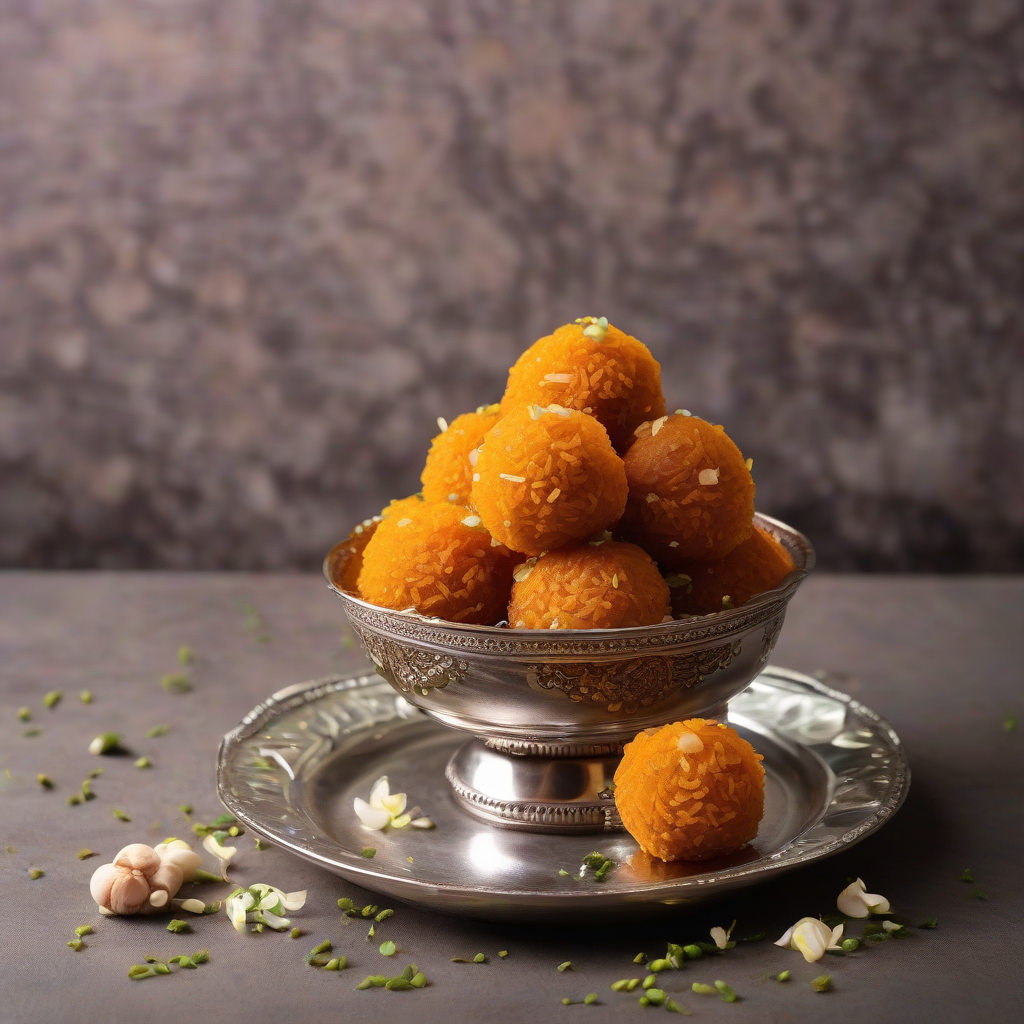Laddu Love: Let’s Make Some Sweet, Sweet Motichoor!
Namaste Doston! Kem cho? Sat Sri Akal! Chef Curry Do-Pyaza here, back with another delicious recipe to brighten your day. Today, we’re diving headfirst into the sugary goodness of Motichoor Laddu! These tiny, pearl-like balls of sweet joy are a staple in Indian celebrations.
Think of Diwali, Holi, weddings, or even just a little “meetha” after a satisfying meal – Motichoor Laddus always have a place at the table. They are especially popular during the festive season when families come together to share love, laughter, and, of course, delicious food.
A Little Laddu History Lesson
The history of the laddu is as sweet as the treat itself! While the exact origin is a bit hazy, many believe laddus were initially used for medicinal purposes in ancient India. Over time, they evolved into the delightful sweet we know and love today. Motichoor Laddu, specifically, is said to have originated in the northern part of India, where it quickly became a royal favourite.
Get Ready to Get Cooking!
- Preparation Time: 20 minutes
- Cooking Time: 45 minutes
What You’ll Need (Ingredients):
- Besan (Gram Flour): 1 cup
- Water: ¾ cup (for batter) + ½ cup (for sugar syrup)
- Sugar: 1 ½ cups
- Ghee (Clarified Butter): For frying
- Elaichi Powder (Cardamom Powder): ½ teaspoon
- Kesar (Saffron Strands): A pinch, soaked in 2 tablespoons of warm milk (optional, for colour and flavour)
- Melon Seeds (Magaz): 2 tablespoons (optional, for garnish)
- Orange Food Colouring: A tiny pinch (optional, for vibrant colour)
Let’s Make Some Magic (Instructions):
- The Batter is Key: In a large bowl, whisk together the besan and ¾ cup of water until you have a smooth, lump-free batter. It should be of pouring consistency, like a thick pancake batter. Let it rest for 15 minutes.
-
Sweet Syrup Time: In a saucepan, combine the sugar and ½ cup of water. Bring to a boil over medium heat, stirring until the sugar dissolves completely. Simmer for 5-7 minutes, or until the syrup reaches a one-string consistency. This means when you take a drop of syrup between your thumb and forefinger and pull them apart, a single string should form. Add the cardamom powder and saffron milk (if using) to the syrup.
-
Pearl Power (Making the Boondi): Heat ghee in a wide, deep pan or kadhai over medium heat. To test if the ghee is hot enough, drop a tiny bit of batter into the ghee. It should sizzle and rise to the surface quickly.
-
Boondi Time: Hold a perforated spoon (jhara) or a ladle with large holes about 4-5 inches above the hot ghee. Pour a spoonful of batter onto the spoon and gently spread it with another spoon or spatula. The batter will drip through the holes, forming tiny droplets (boondi) in the hot ghee.
-
Fry to Perfection: Fry the boondi for just a minute or two, until they are lightly golden. Don’t overcook them, or they’ll become hard. Remove the boondi with a slotted spoon and drain them on a paper towel.
-
Soak it Up: While the boondi is still warm, add them to the warm sugar syrup. Mix gently to ensure all the boondi are coated evenly. Let them soak in the syrup for at least 30 minutes, or until they have absorbed most of the syrup.
-
Laddu Formation: Once the boondi has soaked up the syrup, take a small portion of the mixture in your hand and gently press and shape it into a round laddu. Repeat with the remaining mixture.
-
Garnish and Enjoy: Garnish the laddus with melon seeds (magaz) if desired. Let the laddus cool completely before storing them in an airtight container.
Chef’s Tips for Laddu Perfection:
- Batter Consistency: The batter should not be too thick or too thin. Experiment with the water quantity to get the right consistency.
- Ghee Temperature: The ghee should be hot enough to cook the boondi quickly, but not so hot that it burns them.
- Don’t Overcrowd the Pan: Fry the boondi in batches to avoid overcrowding the pan, which can lower the ghee temperature.
- Syrup Consistency: The one-string consistency is crucial for the laddus to hold their shape and have the right texture.
- Patience is Key: Allow the boondi to soak in the syrup for a sufficient amount of time to ensure they are soft and juicy.
Cooking Variations:
- Gas Stove: Follow the recipe as described above.
- Induction Stove: Use the appropriate heat settings for frying and simmering.
- Pressure Cooker: Not recommended for this recipe.
- Oven: Not recommended for this recipe.
- Microwave: Not recommended for this recipe.
- Air Fryer: Not recommended for this recipe.
- Slow Cooker/Crockpot: Not recommended for this recipe.
Nutritional Information (Approximate, per Laddu):
- Calories: 150-200
- Carbohydrates: 25-35g
- Protein: 2-3g
- Fat: 5-7g
Serving Suggestions:
- Serve Motichoor Laddus as a dessert after a meal.
- Offer them as a sweet treat during festivals and celebrations.
- Pack them as a snack for kids or adults.
- Enjoy them with a cup of hot chai or coffee.
Time to Get Cooking!
Now that you have the recipe and all the tips, it’s time to roll up your sleeves and make some delicious Motichoor Laddus! This recipe is a guaranteed crowd-pleaser, and I know you’ll enjoy sharing these sweet treats with your friends and family. Do try this recipe at home and share it with your friends and family. I am sure they will love it.
Happy cooking, and remember, life is too short to say no to a Laddu!
